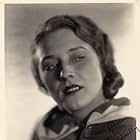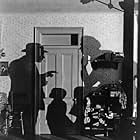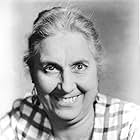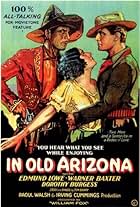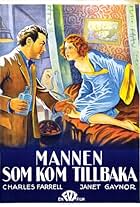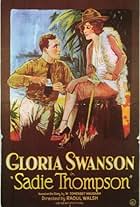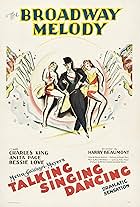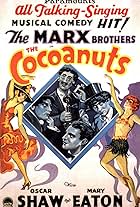Two Marines are sent to South Sea island where they fight over a local island girl.Two Marines are sent to South Sea island where they fight over a local island girl.Two Marines are sent to South Sea island where they fight over a local island girl.
- Awards
- 3 wins
Lelia Karnelly
- Olga
- (as Leila Karnelly)
Jean Laverty
- Fanny
- (as Jean Barry)
Curley Dresden
- O'Sullivan
- (as Albert 'Curley' Dresden)
Willie Keeler
- Brawler
- (as Willie 'Sugar' Keeler)
Con Conrad
- Conductor
- (uncredited)
Joseph Herrick
- Brawler
- (uncredited)
Storyline
Did you know
- TriviaThought to be the first official movie sequel, that is, a film with the same actors reprising roles form an earlier picture (What Price Glory (1926)). This also had the same director and writers as it's progenitor.
- ConnectionsFeatured in The Men Who Made the Movies: Raoul Walsh (1973)
Featured review
Fox Films was betting cinema's first 'buddy film,' 1926's "What Price Glory?" would have enough admirers to pay to see more of the antics of Sergeant Quirt and Captain Flagg. Boy, were they right. When the popular movie's sequel, August 1929's "The Cock-Eyed World," was released, the first two weeks of its playing in national theaters saw record attendance. Ever since, producing sequels has become a staple to Hollywood's more popular films. "The Cock-Eyed World" was cinema's first official movie sequel, qualifying as such because the film had the same actors as its predecessor, as well as the same director and scriptwriters.
The Raoul Walsh-directed follow-up is also one of those rare big-studio movies examining America's involvement after World War One against the Bolsheviks. "The Cock-Eyed World" has Flagg (Victor McLaglen) and Quirt (Edmund Lowe) competing for the same Russian woman when finishing their assignment in Siberia. The United States infantry was shipped over to eastern Russia to assist the White Russians holding their territory against the Red Communists. The Americans' effort was aborted when it became evident the anti-Reds weren't making any headway against the far superior pro-Marxists troops.
The pair end up in South America where they're sent to battle revolutionary rebels in fierce jungle combat. Again, the two woman-hungry soldiers are equally battling each other for the same woman. But they always emerge afterwards by solidifying their friendship while the women remain behind.
Part of the public appeal to see "The Cock-Eyed World" was to hear the "What Price Glory?" lovable characters' voices for the first time. The film was the second-highest box office success in 1929, beaten only by "The Broadway Melody." So popular was the sequel several theaters projected two additional showings after their normal 11 p.m. Closings. The McLaglen/Lowe witty catchphrases caught on microphones were "yards ahead of most early talkers, however leisurely we find it today," noted one reviewer. With the popularity of the pairing, Fox produced two additional so-called "What Price Glory" feature films, 1931's 'Women of All Nations,' and 1933's 'Hot Pepper,' the later one directed by John Blystone, and all featuring McLaglen and Lowe.
The Raoul Walsh-directed follow-up is also one of those rare big-studio movies examining America's involvement after World War One against the Bolsheviks. "The Cock-Eyed World" has Flagg (Victor McLaglen) and Quirt (Edmund Lowe) competing for the same Russian woman when finishing their assignment in Siberia. The United States infantry was shipped over to eastern Russia to assist the White Russians holding their territory against the Red Communists. The Americans' effort was aborted when it became evident the anti-Reds weren't making any headway against the far superior pro-Marxists troops.
The pair end up in South America where they're sent to battle revolutionary rebels in fierce jungle combat. Again, the two woman-hungry soldiers are equally battling each other for the same woman. But they always emerge afterwards by solidifying their friendship while the women remain behind.
Part of the public appeal to see "The Cock-Eyed World" was to hear the "What Price Glory?" lovable characters' voices for the first time. The film was the second-highest box office success in 1929, beaten only by "The Broadway Melody." So popular was the sequel several theaters projected two additional showings after their normal 11 p.m. Closings. The McLaglen/Lowe witty catchphrases caught on microphones were "yards ahead of most early talkers, however leisurely we find it today," noted one reviewer. With the popularity of the pairing, Fox produced two additional so-called "What Price Glory" feature films, 1931's 'Women of All Nations,' and 1933's 'Hot Pepper,' the later one directed by John Blystone, and all featuring McLaglen and Lowe.
- springfieldrental
- Jun 20, 2022
- Permalink
Details
Box office
- Budget
- $661,315 (estimated)
- Runtime1 hour 58 minutes
- Color
- Aspect ratio
- 1.20 : 1
Contribute to this page
Suggest an edit or add missing content










